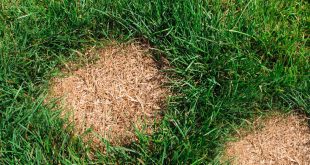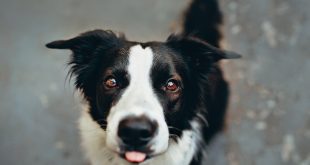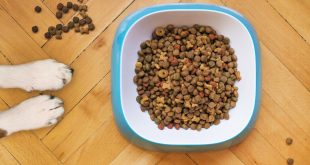This post may contain affiliate links. Please read our disclosure.
Do you have a loveable pup who just can’t seem to stay away from the cat’s food? Is your dog always trying to sneak in for an extra snack when no one is looking? Keeping your pet out of the kitty’s dish can be tricky, but we’re here to help! In this article, we’ll show you some proven tips and tricks on how to keep your dog from eating cat food. So let’s get started and find out how you can protect both of your pets’ meals.
Article Contents
Understanding Why Dogs Eat Cat Food
You may have heard that dogs will eat anything and everything, even cat food! But why do they do this? It turns out there are a few reasons – some may surprise you.
To start, let’s take a look at the biological differences between cats and dogs. Cats tend to be more finicky with their food choices than dogs; they’re naturally designed to prefer certain tastes and textures in their diet compared to canines. This means that when it comes to meals, cats usually get something very specific: a high-protein mix of meat, fish or eggs with plenty of healthy fats like salmon oil and minerals like calcium. On the other hand, dogs don’t need such specialized diets since they’re omnivores by nature so they can eat just about anything (including your leftovers).
This is where the temptation for canine companions arises – if you keep a bag of cat food lying around without supervision chances are your pup might try it out for size! Dogs love trying new foods as much as cats enjoy eating theirs; after all both animals are scavengers by instinct so naturally curious about what’s on offer in terms of sustenance. The difference is that while cats will often reject any unfamiliar flavors or textures in their dishes due to their sensitive palates – pups tend to dive right in! Plus who could resist those tempting aromas wafting from kitty’s bowl?
So next time you catch your dog snacking on some fancy feline fare remember – curiosity killed the cat but satisfaction brought him back !
Here are some key points why:
- Cats have more specialized diets than dogs
- Dogs have an omnivorous appetite which leads them towards different types of food sources
- Both animals instinctively scavenge for meals
- Cat food offers enticing aromas which attract pooches
- Pups tend not jump at unfamiliar flavors/textures unlike felines
How to Keep Dogs From Eating Cat Food
Cats and dogs often feel like natural enemies, but it’s important that they can live in harmony. One of the most common issues between cats and dogs is when the dog tries to eat the cat’s food. This can be incredibly irritating for pet owners both because it’s a mess and because it could be dangerous for the dog if the food isn’t suitable for him. Fortunately, there are several ways to help keep your pup from eating your kitty’s dinner:
First, you should feed them at separate times so that one does not have access to another animal’s meal. Feeding each pet alone will also give them some much-needed quality time with their human companion! Additionally, make sure that all bowls are placed in different areas so neither animal has easy access to another’s food bowl or treats. If possible, try elevating one pet’s bowl higher than the other animals’. That way they won’t even be able to get close enough to try stealing any snacks!
Finally – and most importantly – invest in some good quality lids or covers for both cat food and dog food containers as well as litter boxes; this will ensure no sneaky snacking happens while you’re away from home! It may take some trial and error until you find a system that works best for your pets but don’t worry – keeping our furry friends happy together is totally worth it!
Making Cat Food Unattractive to Dogs
We all know how much our fur babies love to get into everything, and that includes the food intended for other animals! If your cat’s food is being eaten by a pesky pup, it can be so frustrating. Luckily there are some steps you can take to make sure Fido doesn’t have his way with Fluffy’s dinner plate.
One strategy you can employ is changing the texture of your kitty’s chow. Make it as unappealing as possible – try dry, crunchy foods or turned up wet recipes full of strong flavors that dogs just don’t enjoy. This will give them something they’re not used to and likely won’t want to eat because of its unfamiliarity. You may also want to consider getting an elevated feeding station for your feline friend so their meals aren’t within reach of four-legged guests in the house (this prevents any potential messes too!).
Another tip? Monitor what type of food you’re giving your furry family members. Dogs usually prefer high protein diets while cats should be eating more fat-rich foods; this difference in diet helps prevent cross contamination between dishes so everyone stays happy and healthy! By differentiating what kind of nutrition each pet needs, you’ll ensure neither animal has access to their neighbor’s meal plan which keeps them both safe from unwanted consequences like digestive issues or weight gain due to overeating someone else’s grub!
Feeding Cats in a Secure Area
Providing a safe and secure space for cats to feed is often overlooked, but it’s an essential part of providing cats with the care they need. Cats are naturally curious and love exploring their environment, so keeping them in a designated area while eating can help keep them from finding trouble or getting into a situation where they could be hurt.
Creating this type of feeding space doesn’t have to be difficult; it just requires some thought and planning. Start by setting up boundaries that will contain your cat while they eat – whether that’s using pet gates or simply placing furniture around them in the room you plan on feeding in. Make sure to provide plenty of toys as well – these will distract your cat if they get bored during mealtime, ensuring no disruption occurs as you serve their food. Additionally, consider adding some comfortable bedding such as blankets or pillows – this will make mealtimes more relaxing for both you and your cat!
It’s also important to provide clean water nearby; not only does this ensure your cat stays hydrated throughout the day, but having easy access to fresh water might encourage them to drink more regularly than usual! Finally, try selecting a spot near windows for extra light – sunbeams can act like entertainment for cats who don’t want too much activity when eating. By taking these steps towards creating a secure area when feeding cats, owners can rest assured knowing their beloved companions are safe during meal times!
Keeping Dog and Cat Food Separate
When you have both cats and dogs living in the same home, it’s important to keep their foods separate. Pets can be incredibly territorial over their food and may growl or hiss if another animal tries to eat from their bowl. This could lead to a tense situation between your pets and is best avoided by keeping them apart when feeding time comes.
The simplest way of doing this is placing each pet’s food on either side of the room so they won’t be able to smell or see one another while eating. You might also want to consider buying two different types of bowls – plastic for cats as they tend not scratch at metal ones, and metal for dogs which will stand up better against wear-and-tear over time. Don’t forget that water dishes should also be placed separately, too!
To ensure optimal nutrition for both animals, make sure you buy specific formulas suitable for each type of pet; cat food is formulated differently than dog food due its unique needs (such as higher protein content) so don’t let them share meals! Additionally, check that all ingredients are safe before purchasing any new products: avoid artificial colorings, preservatives or flavors where possible. Here are some tips on keeping your furry friends’ meals separate:
- Place food dishes on opposite sides of the room
- Use different types of bowls (plastic/metal)
- Ensure water dishes are kept apart too
- Purchase specific formulas suited for each type of pet
- Avoid artificial additives in purchased products
Training Your Dog Not to Eat Cat Food
It is important to train your dog not to eat cat food. Not only can cat food be dangerous for dogs, but it can also create tension in the household between cats and dogs if they are competing for the same meal. Eating out of a cat’s bowl could potentially lead to aggressive behavior from either one or both animals.
Training does require patience and consistency, but with positive reinforcement, you can get your pup accustomed to leaving their feline companion’s food alone. Start by establishing clear boundaries where you let your pet know that eating from the cat’s dish is off-limits. Then, provide healthy treats as rewards when they obey and don’t try snacking on kitty chow. You should never punish or yell at them for trying as this will make them fearful and may cause behavioral issues down the line.
Additionally, always feed your pup before allowing access to the area where other pets eat so that they won’t feel tempted or left out while others around them are enjoying their meals – even if those meals aren’t meant for him! Finally, teaching a “leave it” command should help reinforce good behavior when they come close to Fido’s forbidden feast! With some focus and dedication during training sessions each day, soon enough everyone in the family will have peace knowing that all furry friends are getting fed separately without any disputes over who gets what!
Taking Away the Urge for Eating Cat food with Alternatives
When it comes to our beloved cats, we all want what is best for them. But sometimes they might have the urge to eat things that are not at all suitable for their health and well-being – like cat food! As pet owners, it can be difficult trying to take away the urge of wanting something that could potentially harm them.
Fortunately, there are alternatives we can look into when our cats start showing this behavior. One way would be by diversifying their diet with healthier options such as adding fish or meat in addition to regular food. Also, providing plenty of toys and activities around your home will help keep them entertained so they won’t feel tempted by other items as much. Additionally, finding a trusted vet who can provide advice on how to tackle any potential issues is always recommended too!
There are also some supplements available specifically designed for cats which could help take away the temptation of eating unhealthy foods such as cat food. These supplements contain vitamins and minerals essential for cats’ growth and development – ensuring they get all the nutrients they need without consuming anything hazardous or bad for their bodies. Finally, monitoring your pet’s environment is also important in helping prevent any further cravings from arising in the future – making sure everything remains safe and secure at all times!
Wrap up!
In conclusion, keeping dogs away from cat food can be a tricky process. It requires training your dog not to eat it, making the food itself unattractive, and feeding cats in a secure area. Also remember to keep the two types of food separate and provide attractive alternatives for your pup to enjoy instead. With dedication and understanding you can make sure that neither pet is getting into something they shouldn’t!
FAQ On Keeping your dog Away from Cat Food
How to keep dog from eating cat food?
The best way to keep a dog from eating cat food is to feed them at different times and in separate locations. If possible, move the cat’s food bowl out of reach of your dog so they can’t get it. Additionally, feeding cats on top of counters or other higher spots will help make sure that no matter how persistent your pup may be, they won’t be able to access their feline friend’s meal.
What do I need when introducing a new dog into my home?
When you are bringing in a new four-legged family member, there are several items that you should have ready before their arrival: proper identification tags with up-to-date contact information for both yourself and your vet; an appropriately sized crate; comfortable bedding; plenty of toys (both mentally stimulating and chewable); treats for rewards during training exercises; as well as food appropriate for the age, breed and size of the animal.
How do I socialize my puppy with a cat?
Socializing puppies with other dogs and a cat if you have one is essential for happy and healthy dogs later in life. It’s important to start early – between 8 weeks old through 4 months old – by exposing them regularly to many different people and animals while also teaching basic commands such as sit/stay/come. This allows puppies time to interact safely with others while learning good behaviors simultaneously. As long as it is done slowly with positive reinforcement methods, socializing can reduce fear responses which can lead to better canine relationships overall!
What kind of exercise does my adult dog need?
Exercise requirements vary depending on breed but all adult dogs benefit from regular activity including daily walks or runs along with mental stimulation activities like playing fetch or agility courses if available. Exercise not only helps maintain physical health but also ensures emotional wellbeing since it reduces stress levels that come from being inactive too long throughout the day or week causing boredom or frustration in some cases leading behavioral issues down the road so making sure your pet gets enough exercise is key!
What should I look for when selecting a veterinarian?
When looking for a vet it’s important to find one who has experience treating animals similar to yours whether that be small mammals like hamsters or large breeds like Great Danes – this will ensure they know how best handle any medical concerns specific those type pets might face down line. Also inquire about costs associated with various treatments since these fees could vary greatly depending on location so doing research ahead time would save money unnecessary surprises later!
 Petnile Comprehensive Pet Care Guides
Petnile Comprehensive Pet Care Guides



